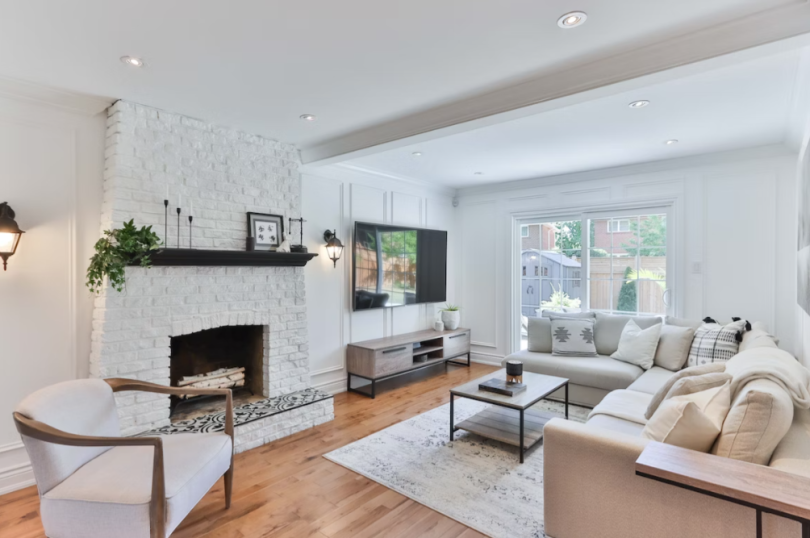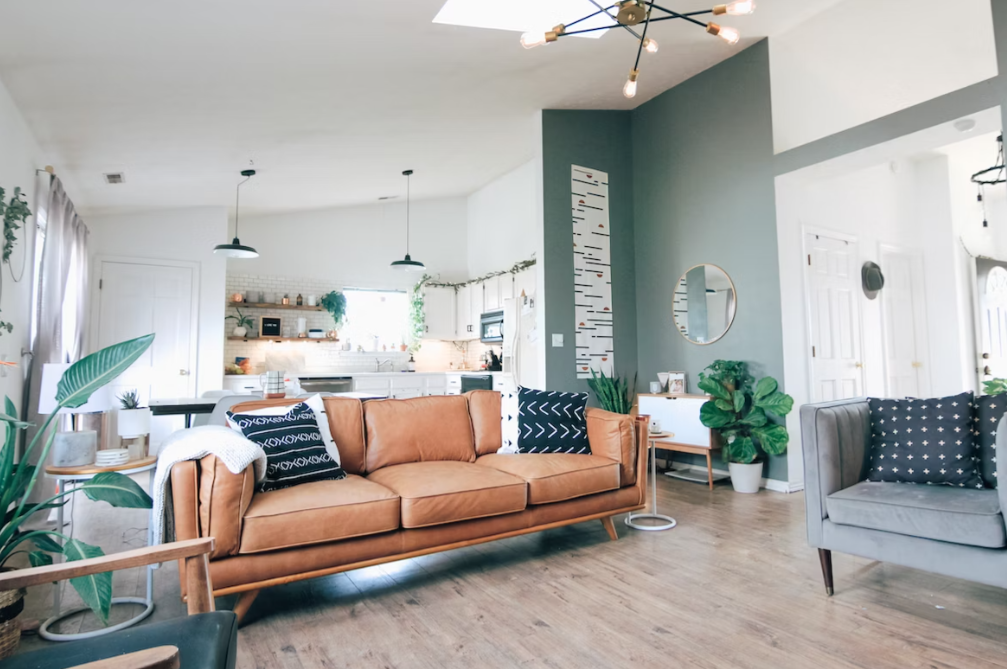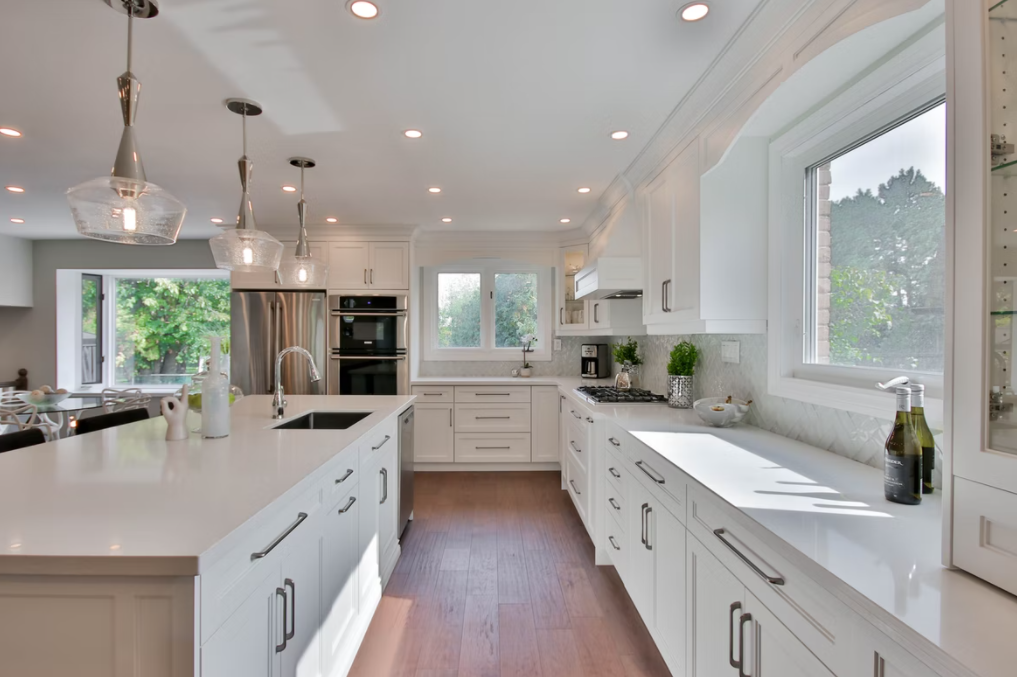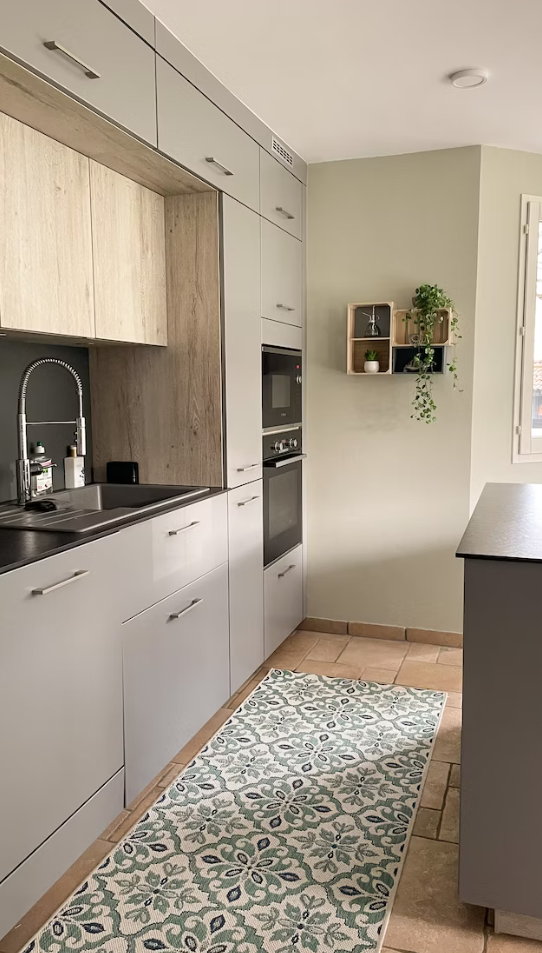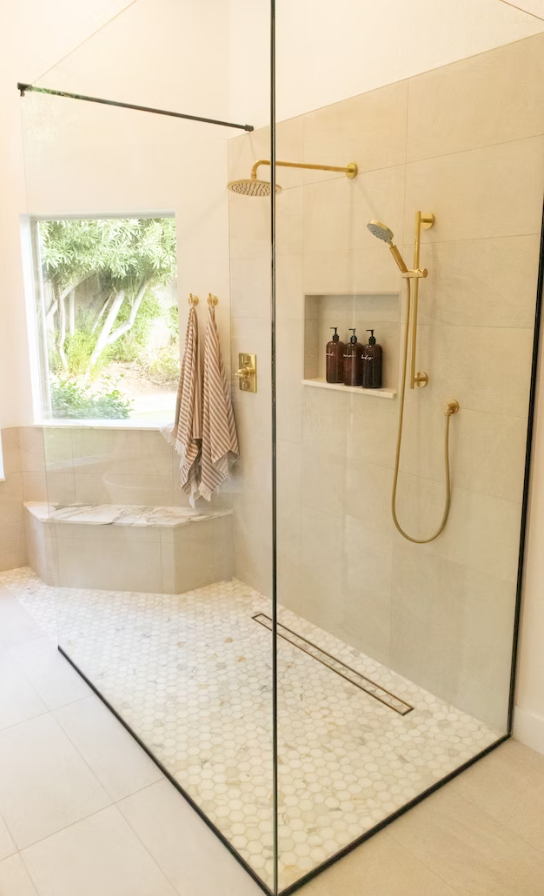If you are not sure which interior design style to choose, consider choosing the one that’s easiest to clean!
We all lead hectic lives nowadays. There never seem to be enough hours to do all the chores and have some time to relax and spend with your family.
Well, you’ll be pleased to know that there are certain things you can do if you are looking to redesign or remodel your home that will make cleaning much easier and free up some precious “you time”. There are endless affordable options, now readily available, that can make your home more functional and easier to clean. Read on to find out more!
Easy-to-clean flooring
Carpets have become popular for many homeowners because they come in various colours and textures. They are soft on your feet and can create a warm feeling in any room.
However, they require regular cleaning to retain their look and feel.
Did you know that about a kilogram of dirt can collect under your carpets in a year?
Also, the average vacuum cleaner has been known to blow more germs into the air than in a kitchen rubbish bin. It’s also scary to discover that the Norovirus can survive in an uncleaned carpet for as long as a month. All these facts are a little bit worrying if you have carpets in your home.
Some alternatives will also be much easier to clean and be just as attractive:
- Wooden flooring is one option. This type of flooring will give your home a luxurious feel; all it requires is a regular sweep and mop.
- Stained concrete finished with a sealer is another choice. Very beautiful patterns and colours can be used in this type of flooring. The final seal of the surface makes it easy to clean with a brush and mop and impervious to most things that could get spilled on the floor.
- Laminate flooring is another popular option for flooring. It’s easy to install and maintain and resistant to scratches, stains, and wear and tear. However, laminate flooring may not be as durable as the other options. It can be prone to moisture damage and may warp or buckle over time if exposed to excessive water or humidity.
- Tiled flooring is durable, long-lasting, and easy to clean, making it a practical option for high-traffic areas, such as kitchens and bathrooms. The grout between the tiles can collect dirt and grime over time, so cleaning and sealing it periodically is essential to prevent staining and discolouration.
If you still want carpets in your home, maybe think about just having them in the bedroom, as they are soft on bare feet.
Also, consider carpet tiles or rugs as an alternative. The good thing about carpet tiles is that if something gets spilled, they can be taken up and replaced with clean ones.
Easy-to-clean walls
It’s smart to have easy-to-clean walls, especially if you have children or pets. They bring endless amounts of dirt into your home, and think nothing about rubbing up against the closest walls leaving grimy marks.
There are paints available that are durable and easy to clean. You won’t be tied to a particular colour as they come in various hues.
Look for paints that are specifically labelled “washable” or “scrubbable” to ensure they can withstand regular cleaning without fading or peeling.
Having your walls painted with that type of paint, you can always add a quick wall spot cleaning, for example, to your end of lease cleaning service, and your walls will look just as fresh as they did after painting.
Quartz countertops
Regarding kitchen and bathroom design, quartz countertops are popular for their durability and ease of maintenance.
Unlike natural stone countertops, quartz is non-porous, which means it is resistant to stains, scratches, and water damage.
Additionally, quartz countertops are available in various colours and patterns, making it easy to find the perfect match for your home design style.
Stain-resistant and durable soft furnishing
Leather is a favourite for furniture as it requires a quick wipe and is very durable, especially if you have children.
Darker colours are probably the most suitable as they won’t show any marks as easily as cream or white.
There are also faux leather and vinyl coverings. Vinyl has come on in leaps and bounds since the seventies and no longer looks like plastic. Manufacturers can now make it look like leather.
If you still prefer fabric, stain-resistant designs and water-repellent fabrics are available that are high quality at no extra cost. Several brands offer custom sofa slipcovers that can easily match your decorating style and save you from discarding your old sofa.
There are also specialised fabric protection options like Scotchgard that create an invisible barrier over the fibres. That can be a lifesaver when you live in a rental property. When it comes time for the end-of-lease inspection, the furniture still looks as good as when you moved in.
Built-in storage solutions
Having adequate storage space is key to keeping your home clean and organised. Built-in storage solutions such as shelving units, closets, and cabinets can help you maximise your storage space while minimising clutter.
Additionally, these solutions can be customised to fit your specific needs and preferences, allowing you to create a space that works for you and your family.
Choose items of furniture that have a dual purpose if you can. Perhaps look at window seats that can store blankets, books, and games. Store your most used items where they can be easily reached without needing steps.
Smart home technology
Incorporating smart home technology into your home design can make maintenance and cleaning easier.
Devices such as automated thermostats, water heaters, lighting systems, robot vacuum cleaners and security systems can be controlled remotely from your smartphone or computer, making it easy to manage your home even when you’re not there.
Some smart home devices can even detect issues before they become significant problems, such as water leaks or HVAC malfunctions, allowing you to address them before they cause serious damage or require costly repairs.
Pet-friendly design
If you have furry babies, incorporating pet-friendly design features into your home can make cleaning easier and more manageable.
For example, choosing durable flooring materials such as ceramic tile or vinyl flooring can withstand scratches and spills. A designated area, such as a mudroom or laundry room with a washing station for your little one, can help keep your home clean and tidy.
Consider adding built-in storage solutions for pet supplies, such as food and toys, to keep them organised and easily accessible. Furthermore, choose pet-friendly furniture, such as leather or microfiber upholstery, that can be easily wiped clean and doesn’t trap animal hair.
We mentioned these design features above, but having furry babies at home makes them even more valuable. Incorporating a pet-friendly design can create a stylish and practical space for you and your four-legged friends.
Vinyl siding
This is an excellent easy-to-maintain choice.
Vinyl siding is durable, weather-resistant, and easy to clean. And, unlike wood siding, it doesn’t require regular painting or staining, making it a low-maintenance choice for homeowners.
Additionally, vinyl siding is available in various colours and styles, making it easy to find the right match for your home’s design style.
Low-maintenance landscaping
You mustn’t neglect the exterior when it comes to maintaining a beautiful home.
Low-maintenance landscaping choices can help to reduce the time and effort needed to maintain the outdoor space.
Some great choices include native plants, succulents, and groundcovers. These greens require minimal watering and pruning and are also resistant to pests and diseases.
Conclusion
Whether you are a landlord looking to improve your properties or a homeowner that wants to free up your time, we hope some of the ideas above will help you.
By choosing low-maintenance materials and finishes, smart home technology, and built-in storage solutions, you can create a space that is not only beautiful but also functional and stress-free.
If you still feel overwhelmed by the process, consider getting professional assistance. Don’t spend your leisure time cleaning and tidying.

